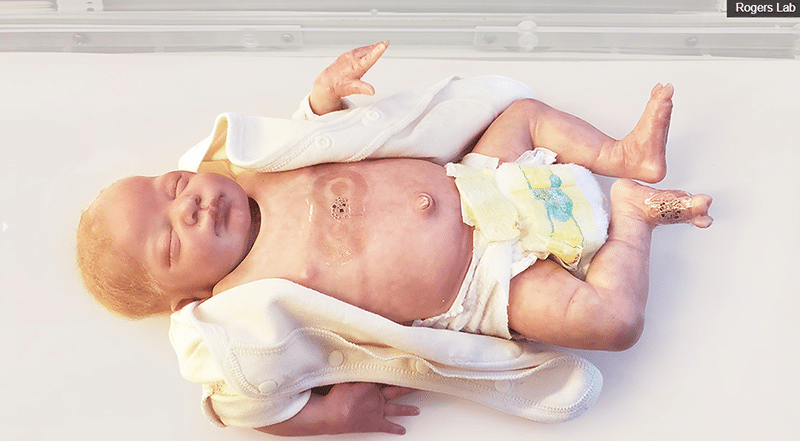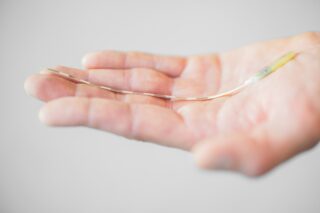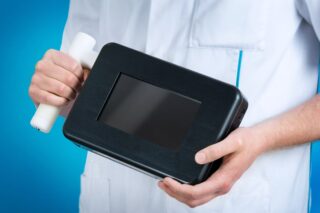At Northwestern University in the States, a team headed by bioelectronics pioneer John Rogers have developed two flexible wireless sensors with the aim of replacing current technology in prenatal intensive care units. In addition to being wireless, the sensors are battery-free and skinlike. The goal is to remove wires and strong adhesives from the equation, allowing parents to interact more comfortably with their baby.
A premature baby’s vital signs need to be constantly monitored. Currently this means a lot of wires have to be connected to the baby using adhesive tape on their skin. This makes it very difficult to pick them up, which is challenging for caregivers and parents. The wires create a physical barrier around the baby.
Once you actually manage to pick the baby up in spite of all of the wires, you are limited to a small radius around the bed determined by the wire length. Feeding and changing the baby is more difficult, you can’t take them for a walk, the baby can’t spend a night in the mother’s hospital room. Bonding is made that much more difficult at a critical stage in the baby’s life. Skin to skin contact for premature babies has been demonstrated to decrease the risk of pulmonary complications, liver issues and infection.

Interactions
The wireless sensors would allow parents of premature babies to interact with them more comfortably and frequently. It could even allow an earlier hospital discharge date as the baby could continue to be monitored wirelessly from home. The sensors are groundbreaking in that they are so thin and flexible. One wireless device is placed on the baby’s chest or back to monitor the temperature, electric cardiogram, respiratory rate and blood pressure. Another device that wraps around the baby’s foot measures oxygenation.
To test the devices, they are being used on babies that are also being monitored in the conventional way (with wires). This provides two sets of data that can be compared to prove the efficacy of the wireless sensors. Rogers, and his team expect that the wireless devices will be used in American hospitals within two to three years.










